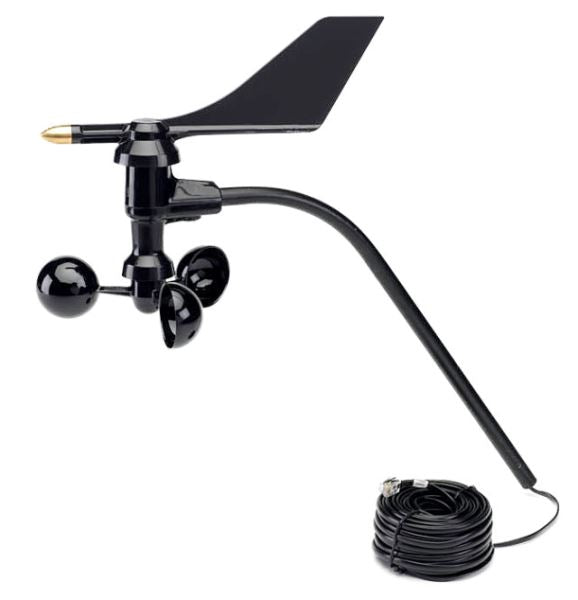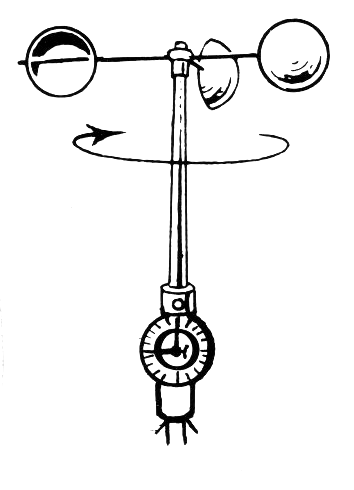How to Keep and Look After Your Anemometer to Make Certain Long Life
How to Keep and Look After Your Anemometer to Make Certain Long Life
Blog Article
Exploring the Functions and Advantages of Anemometers for Weather Condition Fanatics and Specialists
Anemometers stand as crucial tools in the world of climate surveillance, satisfying both enthusiasts and skilled professionals alike. These gadgets offer a home window right into the vibrant world of wind patterns and rates, giving vital information for atmospheric evaluation and forecasting. From mug anemometers to sonic anemometers, each type brings its distinct set of applications and benefits, clarifying various facets of atmospheric problems. As we dive into the functions and benefits of anemometers, a much deeper understanding emerges not just of dominating weather sensations but additionally of the more comprehensive ramifications for markets like wind energy production and ecological research.
Significance of Anemometers in Weather Surveillance
Anemometers play an essential function in weather condition surveillance by providing precise dimensions of wind speed, helping in projecting and understanding weather condition patterns. These tools, ranging from typical cup anemometers to modern-day ultrasonic anemometers, are important for meteorologists, researchers, and climate lovers alike. By measuring wind speed, anemometers assist in determining the strength of weather sensations such as hurricanes, hurricanes, and storms. In addition, they provide beneficial information for aeronautics, maritime procedures, and various industries that are delicate to wind problems.

Sorts Of Anemometers and Their Applications
The most common types of anemometers consist of cup anemometers, vane anemometers, hot-wire anemometers, and ultrasonic anemometers. Cup anemometers are composed of 3 or four mugs placed on straight arms that revolve with the wind, measuring its speed. Vane anemometers, on the other hand, use an easily rotating vane to align with the wind direction, giving both wind speed and direction measurements.
Mug anemometers are robust and appropriate for general weather monitoring, while vane anemometers are favored for directional measurements. Ultrasonic anemometers are non-intrusive and use high accuracy, frequently utilized in research and specialized weather condition surveillance applications.
Benefits of Making Use Of Anemometers in Forecasting
In weather forecasting, the utilization of anemometers uses very useful benefits for boosting the accuracy of weather condition projecting. Anemometers measure wind speed and direction, offering essential information for forecasting weather condition patterns. By incorporating wind data right into forecasting designs, meteorologists can much better comprehend the movement of climate systems, prepare for modifications in climatic conditions, and issue more accurate projections.
Additionally, anemometers play an essential role in analyzing potential weather dangers. Keeping an eye on wind speeds aids forecasters forecast extreme weather events such as cyclones, hurricanes, see this page and winter months storms with greater accuracy. This early warning system enables authorities to provide prompt alerts and carry out necessary safety actions, reducing the risks to life and residential property.
Furthermore, anemometers assist in maximizing renewable resource manufacturing. By analyzing wind patterns, meteorologists can determine appropriate areas for wind farms and predict energy output, adding to the effective generation of wind power.

Anemometers in Wind Energy Production
Provided the essential duty anemometers play in giving exact wind visit here data for climate forecasting and danger assessment, their relevance encompasses the world of wind power manufacturing. Anemometers are necessary instruments in the field of wind power, where the measurement of wind rate and direction is essential for establishing the usefulness and effectiveness of wind generator setups. By accurately gauging wind speeds at differing elevations, anemometers aid optimize the positioning and design of wind turbines to make best use of power output.
In wind ranches, anemometers are tactically placed to gather real-time wind information that is utilized to analyze the prospective energy production of a website. This information contributes in establishing the economic practicality of wind energy jobs and in forecasting power generation to make sure grid stability. In addition, anemometers aid in keeping track of wind conditions to enhance generator efficiency, protect against damage from high their explanation winds, and guarantee the security of workers operating in the location of wind generators.
Enhancing Climate Recognizing With Anemometers

Anemometers play a vital role in boosting our understanding of microclimates. These localized weather can differ dramatically from broader local projections, making it vital to have precise data for certain areas. anemometer. By tactically placing anemometers in numerous places, researchers can collect thorough info on exactly how wind acts in different surfaces, metropolitan environments, or bodies of water
In addition, anemometers add to enhancing weather projecting designs by providing real-time information on wind actions. This info is particularly beneficial for forecasting serious weather condition occasions, enhancing agricultural practices, and sustaining markets like aviation and maritime navigating. On the whole, anemometers are very useful tools that allow us to dig much deeper right into the complexities of climate systems, eventually causing even more better-informed decisions and accurate forecasts.
Verdict
In verdict, anemometers play an essential duty in weather condition monitoring and projecting by gauging wind rate and instructions. Anemometers also have applications in wind power production, more highlighting their value in both weather forecasting and sustainable power markets.
From cup anemometers to sonic anemometers, each type brings its unique set of applications and benefits, losing light on various aspects of atmospheric conditions. These tools, varying from typical cup anemometers to modern ultrasonic anemometers, are crucial for meteorologists, researchers, and climate enthusiasts alike. The most common kinds of anemometers consist of mug anemometers, vane anemometers, hot-wire anemometers, and ultrasonic anemometers. Cup anemometers are appropriate and robust for general weather tracking, while vane anemometers are preferred for directional dimensions. Anemometers are vital tools in the field of wind power, where the measurement of wind speed and instructions is essential for figuring out the usefulness and efficiency of wind turbine installations.
Report this page